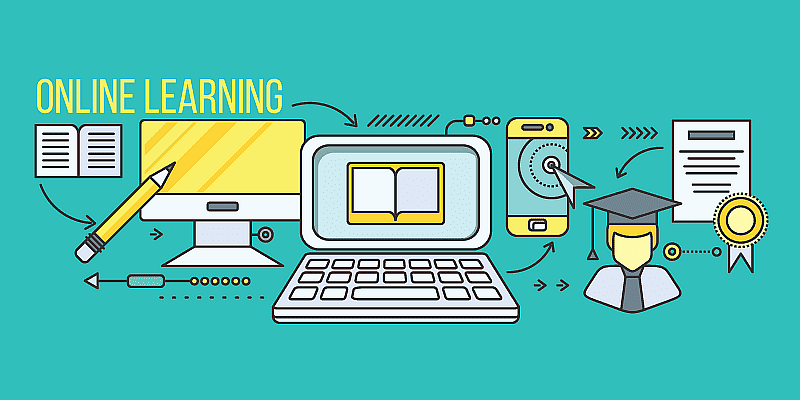The Indian education ecosystem has historically been at the centre of global dialogue, giving the world some of the most dynamic leaders, thinkers, innovators, and game-changers. Born from the ideology of worshipping the ‘guru,’ our ancient learning practices were built on the foundation of imbibing every cent of worldly knowledge.
India’s Vedic ‘Gurukul’ system caught people’s eyes for its unique operating system where teachers and students would reside together and learn. Over the years, the system has modernised and has imbibed various first-world curriculums, but has kept its individualistic teaching methodology built on holistic learning intact.
With online schooling now becoming more prevalent than ever, trends in education have once again started to evolve to inculcate improved learning techniques that are child-focused.
Owing to the country’s vast economic disparity, the vision of an Indian classroom can vary significantly – from hyper-digitised tech-equipped classrooms at luxury educational institutions to the rickety benches and blackboards at public schools in the city, and now to a computer in front of a student.
Over the past few years, slight inculcation of technology via digital presentations, cross-demographic learning programmes, video modules, and more, supplemented by e-learning programmes, steered the system deeper towards digitisation.
Additionally, 2020 has accelerated this transition by taking the entire education system online, thrusting unprepared institutions to attain proficiency in teaching digitally almost overnight.
The remote work culture is driving the growing inclination towards online schooling because of the global pandemic. With more parents now working from home, they are keen to monitor their child’s education.
The results of an internal survey conducted by 21K School also showcased that parents are starting to see an improvement in their child’s retention while studying online. While there are varied views on the topic, it is essential to realise that the concept of online schools will now co-inhabit with the traditional offline schooling system and perhaps become more rampant in the future.
Evolution of the teaching methodology
After written texts and classroom learning became prevalent, written content began to be repurposed and shared with students during well-structured classes. Printing of books and a structured modern education system came into being in the colonial era. Formal education in these institutions was a privilege to a few and only accessible to those who could afford to pay the fees.
The British brought `English education’ to India, which replicated the British public schooling system. These schools operated alongside the Persian, Hindu, and Muslim schools that imparted their respected literature, whereas vernacular schools taught language and arithmetic. Rote learning was an integral part of the dynamic, with students being encouraged and applauded for reproducing every word in its original essence.
Teachers focused on producing academicians who knew every word and could recite them in a heartbeat. An in-depth understanding of concepts was given little to no importance. Mathematicians, philosophers, and scientists were among the few who opined that the cause and effect of all learned concepts should be dwelled upon in further detail.
In the post-colonial era, the roots of the British public schooling system remained in the Indian subcontinent. Learning from these practices, scholars rebuilt the system on its merits, constructing its foundation for becoming one of the most respected education systems globally.
Today, Indian students account for a substantial chunk of the world’s English-speaking population. Driven by traditional teaching methods, digital learning practices in India have also evolved. Most of the students in the country attend classes online. The consumption and inclination towards online learning have birthed a new generation of teaching institutions that primarily operate in the virtual sphere.
E-learning platforms and online schools have become integral parts of the education landscape, and are getting accessed at an accelerated rate. Online schools, just like their brick-and-mortar counterparts, focus on a child’s holistic development by conducting online live classes for a specified duration of time, while following an approved curriculum.
These schools focus on academics and ensure ample interaction with peers through extracurricular activities, the celebration of festivities etc. Teachers tutoring using this format can reach students globally and can maintain a lower student-teacher ratio. They can also focus on a child’s individualistic needs in a more focused manner when teaching online.
Changing student-teacher dynamics
Earlier classrooms had limited student attendance, handpicked based on merit or ancestral pedigree. These students intently learned every drop of information presented to them and held it in high regard. Students rarely indulged in debate or questioned the concepts taught.
In all, we can conclude that classroom dynamics in earlier times were teacher-focused. Today, a child-centric approach is undertaken when establishing the subtleties of a student-teacher relationship.
Understanding that every child has their own learning pace and interests, teachers can modify their subject matter to ensure maximum information absorption. The student-teacher relationship has further strengthened with online schools as tutors can now focus on individual honing the students’ skills.
Online is the future
The newer generation of parents, adept at travelling and technology, brought acceptance to a wave of edtech institutions that promote learning on the go. With a similar affinity towards high-quality education, online schools have brought the much-needed respite to parents who needed to travel for work and could not keep up with the demands of the grounded-ness required by traditional brick and mortar schools.
Following the desired curriculums, online schools allow students and parents to access learning from the best teachers, without the need to be present in the same demography.
There are multiple benefits attached to online schools, including flexibility in learning, more time to hone skills, better retention, and more. Without challenging the edge of offline schools, online schools are undoubtedly the future for the education system.
Another beneficial aspect for the students from the digital learning platforms is good quality content and consistency that is available anytime and anywhere. Most digital platforms guarantee the help of experts for doubts and problems faced by the learner.
(Disclaimer: The views and opinions expressed in this article are those of the author and do not necessarily reflect the views of YS.)










